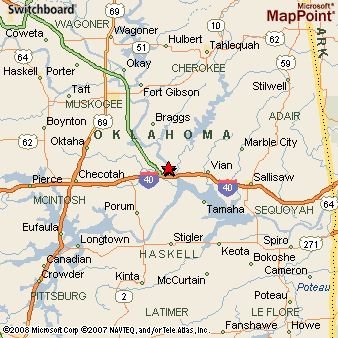
In 1980, the state of Oklahoma’s tests revealed heavy metal contamination in Picher. No one linked the high lung cancer rates, respiratory infections, hypertension and high infant mortality rates to the chat piles. Children in Picher got sick very often and lagged behind those in the rest of the state in testing.

Karen was by no means the only one to suffer. She wonders if her youth in Picher contributed to her health issues. Today, Karen is dyslexic and has an IQ of 65. When she was 18, she had surgery to rectify bone growth in her ears that hindered her hearing. “We’d go swimming in them, and our hair would turn orange and it wouldn’t wash out,” Harvey said in a 2014 interview with NBC. As a child, she played on the chat piles and swam in contaminated ponds in the area. Karen Sue Harvey, 60 years old, lived in Picher from 1960 to 2002. Even for those who didn’t come in close contact with the piles themselves, dust from the piles was often carried on the wind. What they didn’t yet realize was that the town’s celebrated chat piles were already slowly poisoning them. When Tar Creek ran red in the late 1970s-the consequence of pollution from lead, zinc, cadmium, arsenic, iron and manganese-the citizens of Picher began to realize something was horribly wrong and started avoiding the creek. The contaminated water began to seep from the mines in 1973. When the mining ceased in 1967, the pumping of water from the mines ceased as well, and the mines filled with water, accumulating to 76,800 acre-feet of subterranean water. Nobody knew of the risks, the terrible toll the mining detritus was already taking. Children and adults alike played on the piles, picnicking, riding 4-wheelers-the high school track team even used them for training. The chat piles became an important aspect of the local culture. By the time mining ceased in 1967, there were approximately 178 million tons of chat, mill sand and sludge in roughly 30 massive piles scattered in and around Picher. The gray hills dominating Picher’s landscape are piles of toxic chat-crushed limestone, dolomite and silica-laden sedimentary rock-leftovers after the separation of metal ore. During both World Wars, 50% of all American bullets and bombshells were made from metals mined in Picher alone. Picher produced a staggering $20 billion in ore from 1917 to 1947. In its heyday in the 1920s, the town’s population reached nearly 20,000 people, 14,000 of which were resident miners. Picher, owner of the Picher Lead Company. In 1913, Picher-a mining boomtown-formed around a lead and zinc ore strike on land belonging to Harry Crawfish, a full-blood member of the Quapaw tribe. Welcome to one of the most toxic places in America, the site of a monstrous environmental disaster decades in the making. However, it is not these features of Picher that seize one’s attention first-no, it is the massive gray hills of toxic waste looming like the dunes of some great desert. The dozens of blocks of what used to be small town suburbia are now boggy wasteland, flooded hollows pockmarking the landscape in the midst of cracking concrete and low, twisted trees more akin to weeds. Most of its main street buildings have been torn down, and all that remains are empty, overgrown lots. So gone, in fact, that it is beyond a ghost town. To commemorate this tragedy, the city of Webbers Falls created the “Angel of the Falls” memorial that can be seen at the park on the riverfront.Only an hour and a half drive northwest of Siloam Springs, there once existed a town of comparable population. 14 people died as a result of the collapse.

In recent history, Webbers Falls is the area where a section of the Interstate 40 bridge collapsed when a barge collided with one of the piers. General Watie stationed his troops in Webbers Falls. It was also home to the last Confederate general to surrender, General Stand Watie. Joseph “Rich Joe” Vann owned a cotton plantation and a steam boat. Webbers Falls was home to a few prominent Cherokees. After the Indian Removal Act, many Cherokees found their way to, and settled down in Webbers Falls. Webber established a trading post, portage service and salt works in 1828, years before the Trail of Tears.

Webbers Falls is Oklahoma’s second oldest town, and is named after its founder Chief Walter Webber and the Arkansas River waterfall.

The town has survived the Civil War, fires, and floods. Webbers Falls is a small town, rich in Cherokee History, that sits on the banks of the Arkansas River in Eastern Oklahoma. The Town of Webbers Falls, OK was founded in 1828 by Chief Walter Webber.


 0 kommentar(er)
0 kommentar(er)
